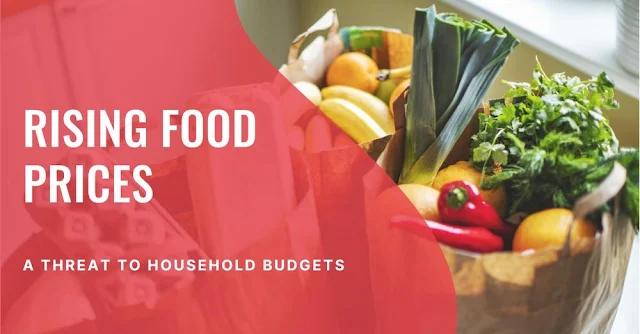While some prices drop, rising food costs are quietly taking a bigger bite out of your budget. Families across Brunei are feeling the pressure at the grocery store, as the cost of essentials climbs higher and higher. Can the relief in one area truly make up for the strain in another? Dive into the hidden story behind the numbers, and discover why food prices could be the biggest threat to your household budget this year.
As grocery bills continue to increase, many families, especially those with lower incomes, are feeling the pressure rise, turning what seemed like an economic relief into a harsh financial situation.
The Consumer Price Index (CPI) for July 2024 presents a complex picture. While overall prices have slightly decreased by 0.4% compared to last year, this small decrease masks the growing burden of rising food costs.
What does this mean for the average consumer? While they may be paying less for transportation and housing, they are spending more to put food on the table. And that's where the real impact is felt.
Surging Food Costs: How Long Can Families Manage?
The harsh reality is that grocery prices are increasing at a faster rate than any relief felt in other areas.
The CPI reports a 0.6% rise in food prices, driven by essential items such as dairy products, eggs, soft drinks, and cereals. For families already struggling financially, this increase is significant and could push them to their limits.
Every visit to the grocery store feels like a heavier burden on their wallets, as the cost of basic items continues to rise without any sign of stopping.
This should be a concern for everyone. For lower-income families, who spend a significant portion of their household budget on food, the situation is particularly dire.
Every additional dollar spent on food means less for other necessities, emergencies, and future expenses.
While transportation and housing may be more affordable, for those who are barely making ends meet, it is the cost of groceries that is causing sleepless nights.
Relief at the Pump, but Is It Sufficient?
Transportation costs have decreased, with the prices of cars, fuel, and air travel dropping by 1.8%.
Housing-related expenses, such as rent and repairs, have also fallen by 1.1%. These numbers suggest some financial relief for consumers, but the question remains: is it enough to counterbalance the rising cost of food?
For many, the answer is no. While lower costs for transportation and housing provide immediate relief, the problem lies in the ever-increasing costs of essential goods.
As food prices continue to rise, any savings on housing or transportation may be consumed by more expensive trips to the grocery store.
A few dollars saved on rent provide little comfort when they are going towards higher prices at the supermarket checkout.
A Looming Crisis for the Cost of Living
The impact on the cost of living is undeniable. Although numbers may indicate a drop in overall prices, the reality is more grim for most people.
The rising cost of food is felt more deeply and more frequently than any other expense.
How long can families continue to absorb these rising prices before something has to give?
The consequence is simple: consumers will start cutting back. Whether it's fewer dinners out, less spending on leisure activities, or holding off on larger purchases, the squeeze on disposable income will be felt across the board.
As food prices continue to climb, it's not just the grocery bill that suffers—it's the entire quality of life for many households.
Businesses on the Front Line
The ripple effects of rising food costs extend beyond the consumer. Businesses, particularly in the food retail and hospitality sectors, are already feeling the strain.
As consumers tighten their belts, restaurants, cafes, and grocery stores are left in a difficult position—either raise prices and risk driving customers away or absorb the increased costs and face shrinking profit margins.
Meanwhile, the transport and housing sectors may see a temporary boost as consumers take advantage of lower prices.
However, with spending power diminished by rising food costs, these gains could be short-lived.
The broader economy faces an uncertain future as businesses and consumers alike grapple with these conflicting trends.
What's Next for the Public?
So, what's the takeaway? The supposed relief of lower transportation and housing costs is quickly overshadowed by the harsh reality of rising food prices.
As the cost of living quietly climbs, the public must ask: How much longer can we sustain this?
If food prices continue to surge, the pressure on household budgets will only grow.
The challenge ahead for consumers is clear: navigating a world where the things we need most are becoming harder and harder to afford.
It's time for the public to demand answers and, more importantly, solutions to this growing problem. Will policymakers step in to address the rising cost of essentials? Or will the burden continue to fall on the shoulders of those who can least afford it? (MHO/09/2024)


.jpeg)
No comments:
Post a Comment